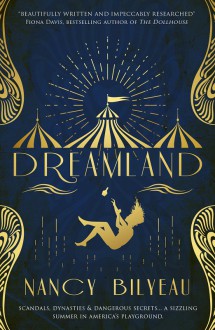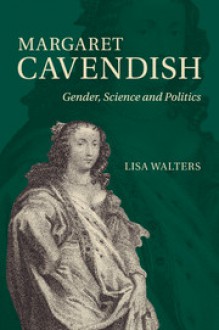
I thank NetGalley and the publisher for inviting me to participate in the blog tour for the launch of this book and for providing me an ARC copy of it, which I freely chose to review. This has in no way influenced my opinion.
I recently read and reviewed Bilyeau’s novel The Blue and loved it so much that I did not hesitate when I got an invitation to read her new novel and join the blog tour. Like the previous one, this book also successfully combines history with intrigue, adventures, mystery, a fantastic cast of characters, and a heroine who is trying to find her own way amid a society in turmoil due to changes in the status-quo and to international historical events.
As the description explains, the novel is set in New York and Coney Island in the summer of 1911. Peggy Batternberg, the protagonist (the author explains that she was inspired by the historical figure of Peggy Guggenheim when she created her main character), belongs to the upper class, although as she observes, her family is only a couple of generations away from very humble origins as immigrants, and they would not have figured among the very select of society a few years earlier. They are also Jewish (not very religious), and although their money protects them from the worst of prejudice and antisemitism, that does not mean it does not exist, as the novel exposes time and again. She is trying to lead her own life as a modern woman, but her family’s power and influence, and society’s double standards of morality for men and women make it difficult for her to break completely free, and she ends up having to leave her job at a bookstore and spend the summer holiday at a posh hotel near Coney Island. Of course, although the hotel is very close to the three amusement parks, including the Dreamland of the title, the clientele of both are separated by the chasm of money and social class.
Peggy is a fascinating character. She is very young, determined, and contradictory at times. She is strong but naïve, passionate and rushed, headstrong and totally unrealistic. She tries to be practical and become independent from her family, but she acknowledges that much of what she does is only possible because she has the support of her family, and she does not have to rely solely on her salary, like her colleagues at work. She lost her father when she was young, and she is aware of the kind of hypocritical behaviour the males of her family engage in, but no matter how she struggles against it, she is still trapped by the morality of the period. Following some fairly traumatic experiences with men of her own class (and the male sense of entitlement —especially of men of a certain class— runs through the novel as a theme, and unfortunately recent events only prove that things haven’t changed as much as we might like to think), it is unsurprising that she feels attracted to an artist, a futurist painter, a foreigner, and somebody who is genuinely interested in her as a person, and not as a rich heiress. I am not a fan of love at first-sight (or insta-love) stories, but considering what we know of the character and of her circumstances, it is easy to understand the attraction, and let’s say that I was quite reconciled to it by the end of the story. The character is forced to question herself and her motives more than once throughout the novel, and she does grow and develop as a result.
The story is told, almost in its entirety, in the first person, from Peggy’s point of view, but there are many other characters that create a rich tapestry of both, the wealthy upper-class society of the era (there are some real historical characters that make brief guest appearances as well), and also the working class, the underclass, and the artists working at the fair. The author paints a clear picture of the Batternberg family, its power structure, the differences between male and female roles within the dynasty, and it makes for a sobering and absorbing read, especially because over the course of the story, Peggy discovers things are even worse than she thought, and the web of deceit, secrets, and false appearances is woven thick. The fact that this people of loose morals look down upon hardworking individuals without a second thought is highlighted by the murders that take place in close proximity to the hotel, and how nobody (other than Peggy) seems to care about the victims or their relatives, only about preventing anything from disturbing the elegant guests. By contrast, some of the lower-class characters, that have the most to lose if things go wrong, go out of their way to help, even at a serious personal cost.
I must admit to being quite taken by some of the secondary characters that appear in the story, and in many cases I’d love to know more about them (the whole of Lilliput scene is amazing; Madame Kschessinska is very intriguing; the police detective; Stefan, of course; and what to say about Ben, Peggy’s cousin, a real puzzle), but I agree with many of the reviewers and Lydia, Peggy’s sister, is a favourite of mine as well. She knows her own mind, she is supportive of her sister, and she grows in strength and maturity through the story. With her like with most things and characters in the story, appearances can be deceptive.
The historical background is well achieved, and I loved the descriptions of Coney Island, the seaside hotels, the fast trains, the clothes, the incubators, the art, the buildings… It felt as if I was peering into that era, and even experiencing the heat, tasting the food, and joining in the rides. The descriptions don’t overwhelm the story but help create a realistic setting and increase our understanding of what the period and the place were like. This is a work of fiction, and although some characters and events are recreated, the novel does not claim to historical accuracy (in fact, Dreamland was no longer functioning in the summer of 1911), but I have no doubt that it will encourage readers to learn more about the period and about Coney Island.
As for the mystery side of things… There are red-herrings; there is misdirection, and several suspects, as it pertains to the genre. There is a fair amount of action, surprises, scares, and Peggy’s turn as an amateur detective is fraught with risk. Although she is neither experienced not particularly skilled as an investigator, she makes up for it with her determination, persistence, and a good nose for choosing her collaborators. This part of the story is the one that requires a greater suspension of disbelief, but the novel is not intended to be a police procedural, and the intrigue fits well into the overall story arc and will keep readers turning the pages at good speed.
I have already talked about the issue of gender and gender politics that is explored in the novel. Although things were moving and women were fighting for the vote, it was not easy, and if it was hard for privileged women to have a say on how their lives should be run, for working-class women it could get positively dangerous, when not lethal. The author also explores the issue of migration, the suspicion towards foreigners (despite the melting-pot mythos of the United States society), the prejudice of society and authorities towards newcomers, and this is also linked to international politics (and, of course, we readers know that the situation was about to get much worse and it would result in World War I). These subjects are well integrated into the fabric of the novel, elevating it beyond the typical historical adventure romp, and they make comparisons to current historical events unavoidable.
The writing style is compelling, with beautiful descriptions combined with a great skill in making us feel and experience the events first-hand, and a good pace, alternating between action and more contemplative scenes, without ever stalling the flow.
I’ve read some reviews that complain about the ending being somewhat rushed and sudden. It speaks to the skill of the author the fact that we don’t want the story to end, and although there are elements of it that I think could have been further developed, overall I enjoyed the ending, especially because it isn’t a conventional one.
In sum, I enjoyed the wild ride that is Dreamland. I wish I could have visited the real one, but lacking that opportunity, this is a close and satisfying second best. I congratulate the author for this great novel, and I look forward to the next.

 Log in with Facebook
Log in with Facebook 










